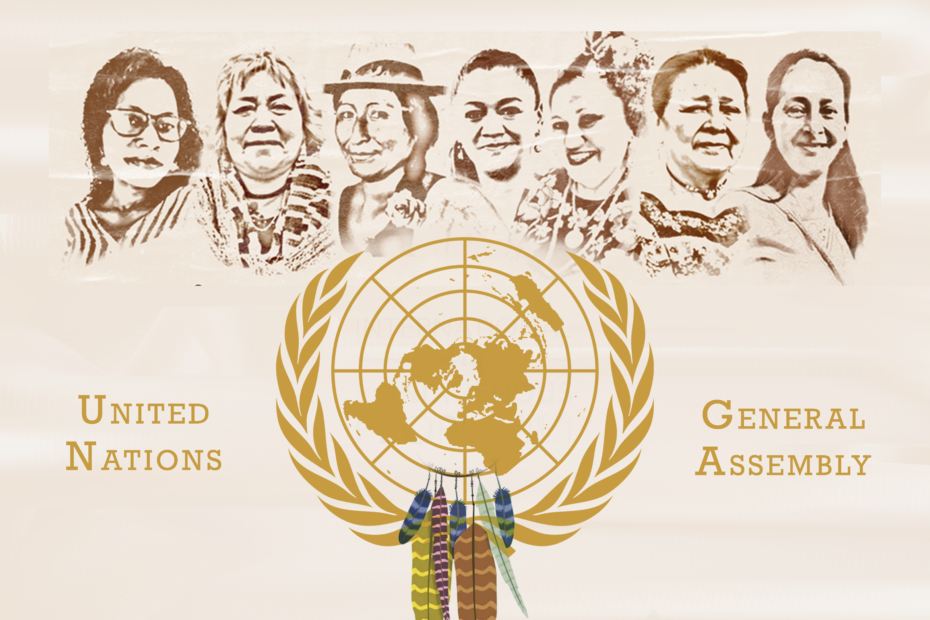During last week’s UN General Assembly in New York City, between the usual speeches and press conferences, a group of Indigenous Brazilian protesters spoke their message loud and clear.
Members of “Amazonia For Life” gathered outside of the UN Headquarters last Monday, demanding that world leaders act immediately to save the Amazon rainforest from further deforestation. Home to the most biodiverse ecosystem on the planet and countless Indigenous tribes, the Amazon is a critical component of our biosphere.
Their target? Protecting 80 per cent of the Amazon rainforest by 2025, a goal they have dubbed “80 = 25”. The initiative has been supported by over 1,200 different organizations, including 50 Indigenous groups from across the Amazonian basin.
In Brazil, former president Jair Bolsonaro’s administration oversaw a record-breaking degradation of the Amazon rainforest. Agriculture and mining were allowed to operate on Indigenous land in the Amazon without Indigenous consent. According to World Wildlife Federation Brazil, the Amazon rainforest lost some 11,568 km² in area over 2022, the last year of Bolsonaro’s term. This translates to a 150 per cent increase in deforestation from the previous year.
Bolsonaro’s legislative moves, while endorsed by the agricultural lobby, were vocally opposed by Indigenous groups and environmental activists. The Amazon rainforest is both a haven of endangered species and one of the largest carbon sinks on the planet, making it essential to Earth’s ecological balance. In a worst-case scenario, the rainforest would reach a “tipping point” and revert into a savannah, leading to the disappearance of all its current ecosystems.
It is precisely this worst-case scenario which “Amazonia For Life” is attempting to stave off. In their latest report, they stress the need for “urgent measures to safeguard the remaining 74% of the Amazon” relatively untouched by human activity.
“Amazonia For Life” is the latest pushback by Indigenous groups around the world against the rapid degradation of Earth’s biosphere. Often living near environmentally-sensitive areas, Indigenous groups have long witnessed their lands desecrated and turned barren by human activity.
In Australia, years of staunch opposition by Aboriginal groups failed to stop the construction of the Carmichael coal mine near Aboriginal sacred sites. The mine, over its projected sixty-year lifetime, will produce a whopping 2% of the maximum CO2 scientists warn we can emit before global warming reaches a point of no return. Bravus (formerly Adani Group), which owns the mine, and police officers have continually harassed Aboriginal locals and supporters for opposing the project or simply accessing their ancestral lands.
Not all Indigenous initiatives have failed, however. Under new President Lula’s administration, Amazon deforestation in Brazil has fallen dramatically. And in the US, the Biden administration has recently returned to Native American tribes the power to stop projects that might pollute waterways under the federal Clean Water Act.
Indigenous groups have also started looking for creative methods to kickstart environmental action. Court cases have become more common a tool for Indigenous communities to pressure governments into action. Over 2100 climate-related court cases were filed in 2022, double the number from 2017. In Canada, the Wet’suwet’en of British Columbia sued the federal government in 2020 for failing to adequately respond to the climate crisis.
Severe wildfires and beetle infestations have plagued the Wet’suwet’en in the last few years as a result of warming temperatures. The First Nations community was also the focal point of national controversy last year, when the CoastLink pipeline’s construction encroached on their lands. The federal government has now announced plans to reach net zero by 2050, while affirming close cooperation with Indigenous stakeholders on climate issues.
Nonetheless, court cases have had mixed results for Indigenous groups elsewhere. The Wet’suwet’en case, in spite of the Canadian government’s promises, was initially rejected before being reconsidered under appeal: this appeal is still ongoing as of time of writing. A 2023 UNEP report concluded that most court cases had “limited success”, being thrown out due to a lack of recognition of Indigenous rights in courts.
Another major problem is ensuring that corporations and governments comply with legal mandates. Despite a 2021 ruling in Ecuador against gas flaring—the toxic burning of natural gas from oil extraction—its practice is continued near Indigenous communities.
Other Indigenous groups act as guardians within their communities, supervising the health of their lands. Across Canada, First Nations communities have put forward “Indigenous Protected and Conserved Areas”, ecological zones where conservation work draws from Indigenous knowledge. This approach has the benefits of cooperation with First Nations communities, as well as continued application and transmission of Indigenous traditions and culture to future generations.
Nonetheless, experts explain that Indigenous groups still face many obstacles—political, racial, and socioeconomic—in their mission to protect and heal their land. A recent United Nations report highlighted deep inequalities in the way climate funding is distributed globally, with Indigenous peoples often left out of the picture. Similar findings were reported last November by Canada’s auditor-general, blasting the lack of adequate emergency services available for Indigenous communities for climate-related disasters. In Brazil, environmental activists—many of whom are Indigenous—have been killed fighting for the future of the earth.
Yet, despite these obstacles, Indigenous people have and continue to spearhead the fight to save our planet.
